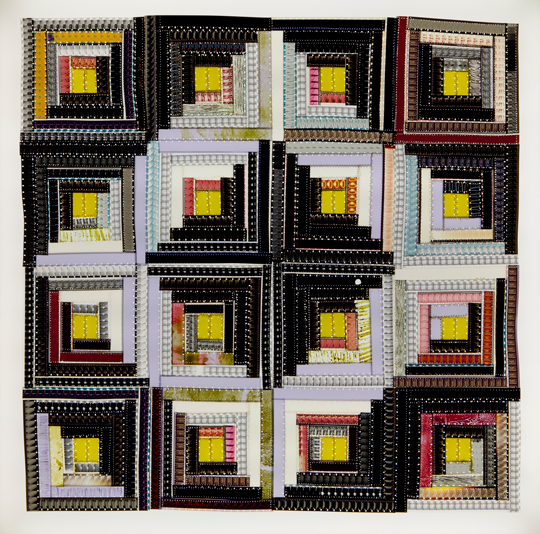Photo of Sabrina Gschwandtner by Jason Spingarn-Koff
Sabrina Gschwandtner is a visual artist who lives in New York City. She has exhibited her artwork internationally, at institutions including the American Folk Art Museum (2013); Smithsonian American Art Museum (2012); the Victoria and Albert Museum (2011); Contemporary Arts Museum, Houston (2010); Bucharest Biennale (2010); the Museum of Arts and Design, New York (2007); Contemporary Art Centre, Lithuania (2007); Socrates Sculpture Park, NY (2005), and SculptureCenter, NY (2004).
She has lectured at art schools, universities, and museums worldwide, including Harvard University; the Rhode Island School of Design; Central Saint Martins College of Art and Design, London; Bergen National Academy of the Arts, Norway, and the Museum of World Culture, Sweden, among many others. She currently teaches undergraduate and graduate courses at Parsons the New School for Design and New York University. She received a BA with honors in art/semiotics from Brown University (2000) and an MFA from Bard College (2008).
What current project are you at work on or have you just completed?
I’ve been working on my film quilt series, which I started in 2009. My quilts utilize 16 mm film footage culled from early Feminist documentaries. I retain allusions to the materials’ former narratives while reworking them with my own personal footage. The works are hung like curtains in the windows of exhibition spaces, or displayed on gallery walls via light boxes. I’ve just finished a new piece for the exhibition “alt_quilts: Sabrina Gschwandtner, Luke Haynes, Stephen Sollins,” on view at the American Folk Art Museum until Jan 5, 2014. I also just completed an interview for the catalog “Sabrina Gschwandtner: Sunshine and Shadow,” which was published by the Philadelphia Art Alliance and includes text by Glenn Adamson, Sarah Archer, and Julia Bryan-Wilson.
 “Wave Hill Sunroom II,” 2013 photo by Matt Suib, Greenhouse Media
“Wave Hill Sunroom II,” 2013 photo by Matt Suib, Greenhouse Media
What inspired this project?
The source of the historical footage is the Fashion Institute of Technology (FIT), which de-accessioned the 16 mm films in their library. These short, educational documentaries focused on textile crafts such as crocheting, knitting, sewing, fabric dyeing, and quilting, and celebrated the women who made them.
After watching the movies, I cut them up and sew them together with my own film footage. In processes that reference both painting and experimental filmmaking, I bleach, dye, scratch, and paint onto some of my film.
The formal logic of my sewn designs are derived from popular American quilt motifs including log cabin squares, octagonal stars, and “string quilts,” wherein long, thin fabric scraps left over from other projects are cut and sewn together.
How have New York’s resources contributed to your current work?
FIT gave their deaccessioned films to Andrew Lampert, the archivist at Anthology Film Archives. He kept some of the films and gave the rest to artists who work with found footage.
I also work with film labs in New York for processing and video transfer of my own footage.



























